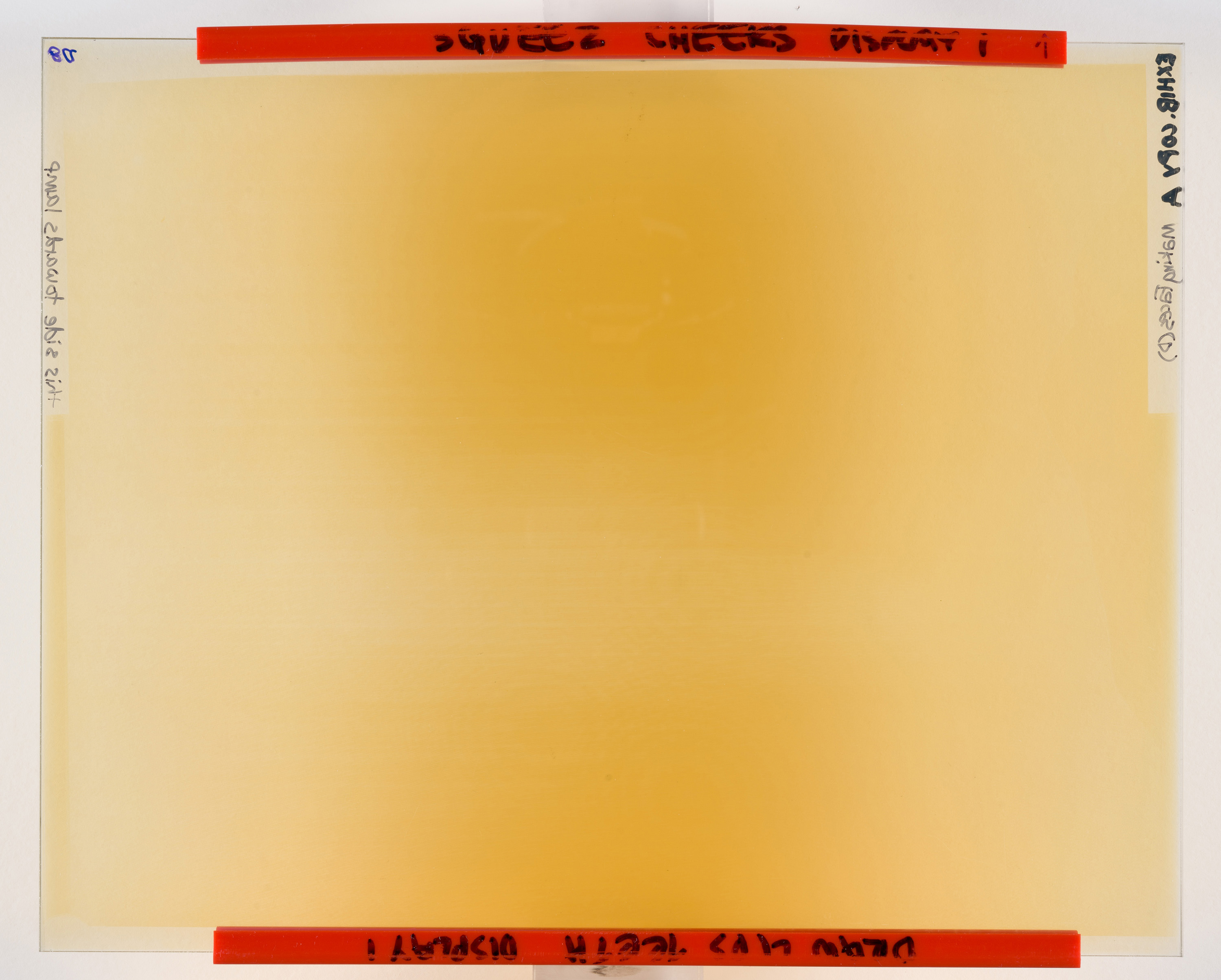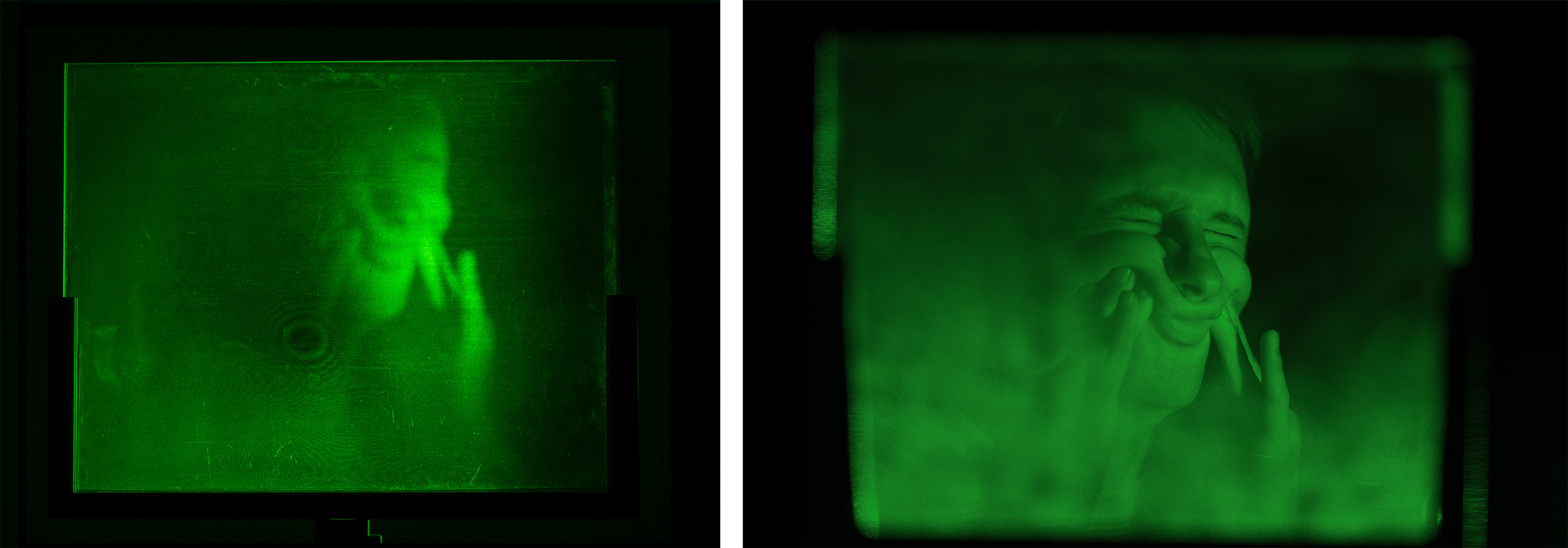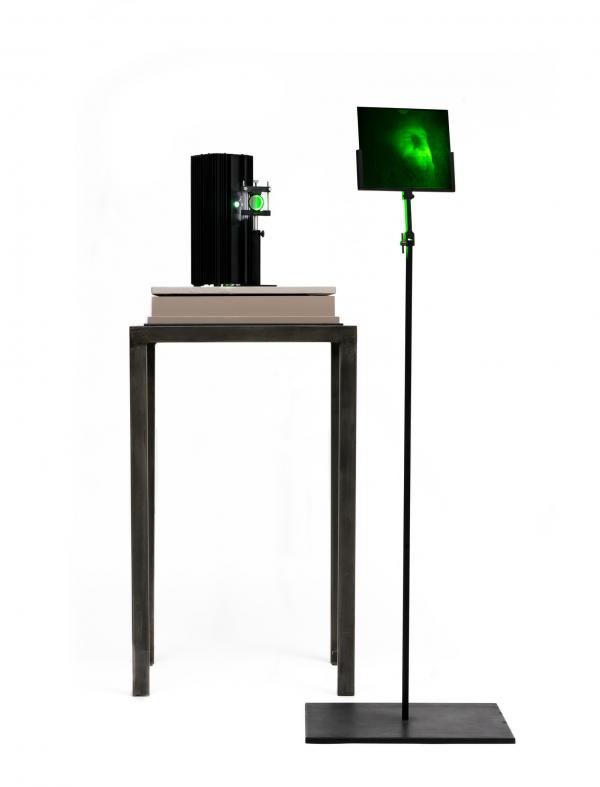Many of you may remember the popularity of holograms in the 80s and 90s. Credit cards, toys, and magazines all boasted holographic improvements. The art field was no exception. Artists who worked with holograms during that time pushed the boundaries of the medium to create images that crossed the line between photograph and object.
Bruce Nauman was interested in holography early on and is credited as the first established artist to use holography as an artistic medium¹. In 1968, Nauman contacted LACMA’s Art & Technology program, expressing his interest in making holograms. This led him to the program’s corporate partner TRW, who referred him to Conduction Corporation and the holographer L. D. Siebert. Working with Siebert, and not formally with LACMA’s A&T initiative, Nauman made two holographic portrait series. The First Hologram Series: Making Faces, shows Nauman “making faces'' in 11 different frames. In the Second Hologram Series: Full Figure Poses, Nauman is seen in 10 frames contorting his body in dynamic poses.
In both series Nauman has his eyes squeezed tightly shut. Sitters for holographic portraits were instructed to close their eyes, due to the risk of eye damage from exposure to the laser light used in the making process². The laser light was so powerful that it penetrated the first few layers of skin, giving the sitters—in this case Nauman—a slightly waxen appearance³.
Nauman’s holograms made one of their earliest museum appearances at LACMA in Bruce Nauman: Work from 1965 to 1972, an exhibition co-organized by LACMA and the Whitney Museum of American Art in 1972. They would not be shown again at LACMA until the 2015 exhibition 50 for 50: Gifts on the Occasion of LACMA’s Anniversary, which included two of a larger group of Nauman holograms generously given to LACMA by Giovanni and Giuseppe Panza di Biumo. In order for viewers to see the holograms properly, the museum needed to recreate the exact angle and wavelength of light that was used to make the hologram originally. A difficult task to complete! Only two of the three holograms donated were displayed at this time, due to the complexities of the installation.
The holograms then went into storage until 2017 when LACMA’s conservation and curatorial staff began to discuss their display for the upcoming traveling exhibition Light, Space, Surface: Works from the Los Angeles County Museum of Art, organized by Senior Curator of Modern Art Carol S. Eliel. The difficulties from the 2015 display resurfaced, requiring research, new equipment, and testing to be resolved. In order to prepare the holograms for the traveling exhibition, it was my goal, as the objects conservator now working on the show, to determine a safe way to display the holograms and for the solution to be easy to transport and install.

At the time of examination, I realized that the light sources acquired with the holograms (a xenon arc lamp and a mercury vapor lamp with a 530nm filter) were detrimental to their display due to high heat emission. The main substrate of the holograms, a gelatin emulsion similar to that used in photographs, is very sensitive to fluctuations in temperature. Damage from such fluctuations can cause irreversible distortion to the holographic image.
Through research, I determined that an alternative method of illuminating the holograms could be achieved with a 530nm diode laser. Originally, the holograms could have been illuminated with then-available laser technology. However, when Nauman made the holograms in 1968, the available gas lasers were dangerous and difficult to use. This is why alternative light sources, like the xenon arc lamp and mercury vapor lamp, were used in years following. Working together, Los Angeles-based holographer James Graham and I developed a new way to illuminate the holograms with now-available diode lasers. After initial testing, Graham modified a 530nm diode laser to make the laser safe for use and at optimal settings for viewing the holograms.

The fascinating three-dimensional images of Nauman's face and figure created with the new diode lasers are sharper and more detailed than those ever seen before at LACMA. Most excitingly, the third hologram in the collection, hologram (A) from the Full Figure Poses series, can now easily be illuminated and seen. The modified diode laser has very low heat emissions, making it safe to use with the holograms. With Graham’s custom-made laser encasement, the diode laser is easy to transport and to install.
We look forward to installing the holograms at LACMA in the future. For now, they are ready for shipment and display in the upcoming traveling exhibition Light, Space, Surface: Works from the Los Angeles County Museum of Art!
¹ Benyon, M and Webster, J. 1986. Pulsed Holography as Art. Leonardo 19(3): 185-191.
² Benyon and Webster 1986, 187
³ Benyon and Webster 1986, 189
This is adapted from Duckor, A. and Graham, J. Unpublished. Lighting with Lasers—A Safe Alternative to Illuminating the Bruce Nauman Holographic Series in Conserving the Ephemeral: Light, ed. [de Roemer, S.]. Paris: ICOM-CC.



